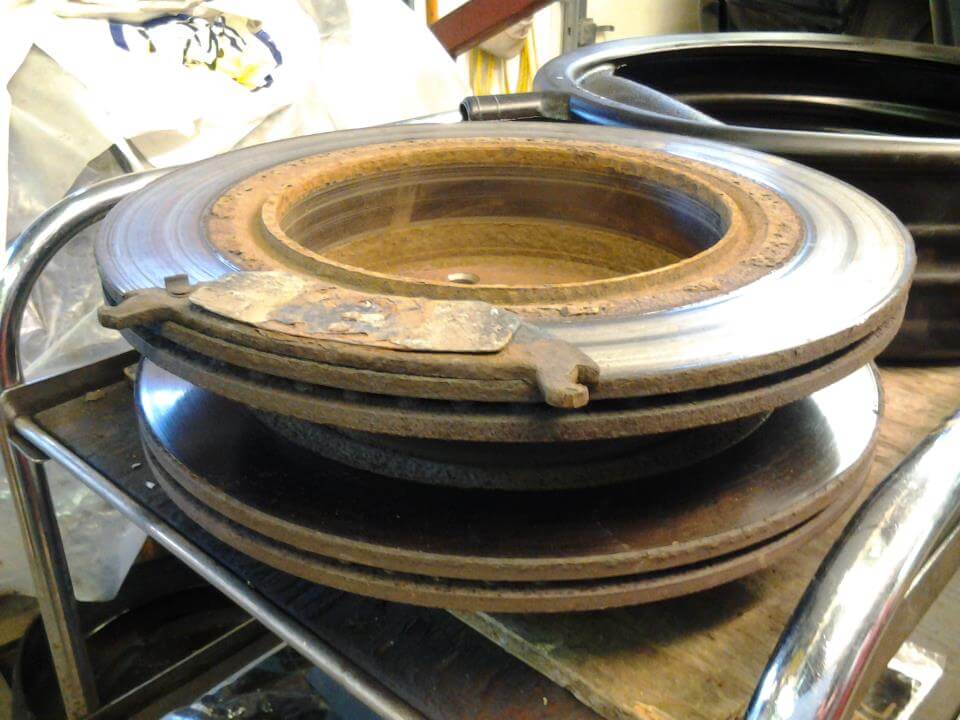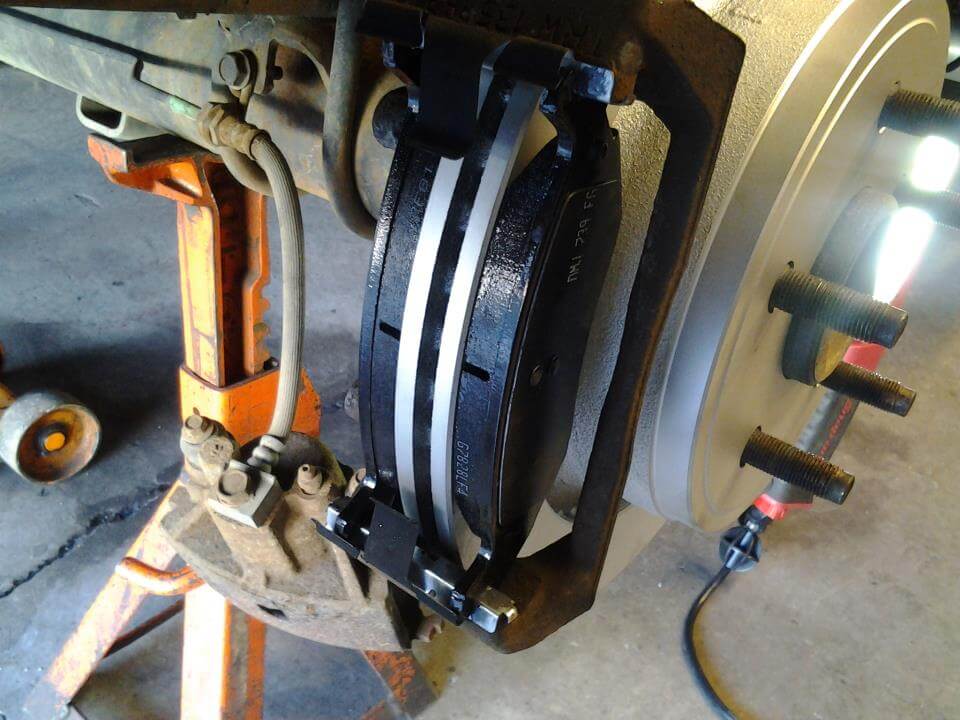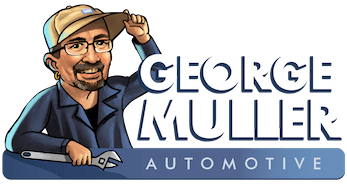I have the brake service skills to service cars of any year, from a 1960 Pontiac Laurentian (which I happen to own), to your brand new Hyundai Santa Fe.
“How Can I Tell If I Need A Brake Service?”
If your brakes are nearing the end of their lives, the brake pads will start to squeal due to a “squealing indicator” that’s installed on the pads.
They will start squealing when it hits that indicator, which tells you that it’s time for brake service. This occurs before you actually run out of brake pad lining, so that you have time to replace them before you’re rubbing metal-on-metal.
It will either squeal when you hit the brakes, or squeal only when you’re actively driving (and not applying the brakes).
After that, when the brakes get a bit worse, they will start to squeal all of the time, regardless of whether you’re pressing down the brakes or not.
Once the pads get REALLY worn out, the “squealer” will break off, and your brakes will actually stop squealing temporarily. As the last of the pad lining wears off, your brakes will then start to “growl” and “grind” as they make metal-to-metal contact. At this point, your rotors are being gouged and damaged, and will likely need replacement.
That’s the consequence of “waiting to replace your brakes” – It costs more.

This customer heard a squealing noise from the wheels. After a while it went away. Then, without warning, an awful grinding noise took it’s place. This is the result: absolutely no brake lining left, destroying the disc/rotor.

This is the photo I took after installing new pads and rotors. You can see how much material is on the new pads. Don’t ignore the sounds you vehicle makes; more often than not, repair costs climb and your safety could be at risk.
The Cost Of New Brakes
If you need to get your brakes replaced with new pads, the base cost for an average car or light truck is $112.50 + the cost of your pads. Pads can be as little as $39 for a set, and can go as high as $120.
To keep the price of your parts down, I always try to buy brake pads that are both high quality, yet in your price range. Some expensive “performance” pads can go as high as $180, but the average driver generally would not benefit from them. I typically try to buy pads in the $50-80 price range. That way I can keep your costs low, but still get a very high quality product.
Callipers & Rotors
Your callipers & rotors could also need replacing depending on how well-maintained your vehicle is. If your callipers are seized, they must be replaced.
Callipers have to be replaced in sets; just because one is seized, doesn’t mean you only have to replace one. You have to replace both at the same time. This is because only replacing a single calliper will cause them to perform inequally, and you run the risk of your brakes pulling right or left; this is a safety hazard in an emergency and could cause an accident.
Only replacing 1 calliper is a very bad practice.
Brake Fluid Flush – Why Do It?
Over time, brake fluid gets filled with contaminants and moisture, which can compromise your braking system. It’s recommended to flush the system to remove these contaminants to prolong the life of the hydraulic components (ie. brake callipers, brake cylinders, master brake cylinder, ABS units).
The perfect time to do a fluid flush is when you’re getting your brakes changed. Fluid change is recommended between 50,000-80,000km, which often is the same life expectancy as brake pads. It’s an inexpensive service, and goes a long way to keeping your brake system working optimally.
A brake fluid flush usually costs around $49.95 with your brake pad change.
Because your car is already apart during a brake service, it’s quite easy to access the areas needed to do a fluid flush at the same time. For that reason, it can cost more to get your fluid flushed when you aren’t getting your brake pads changed (because of the extra labour cost).
